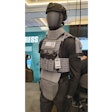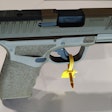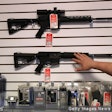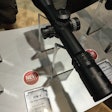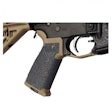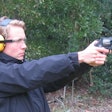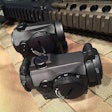After responding to a home invasion call in Pine Hills, Fla., on May 5, 2004, Orange County Sheriff's Dep. Jennifer Fulford found herself in a garage, pinned down in a tight space.
Fulford was protecting two children in a minivan from the two perps who had shot her seven times. Because of her training and her on-the-spot ability to execute a one-handed combat reload, she's alive today. The two perps are dead, and the world is a better place for it.
The biggest reason officers who face these tough odds survive is their will to live. However, a close second is training. As a certified firearms instructor, I often hear students say, "This isn't something I'm ever going to encounter. It's too exotic! Do I really need to learn this?" I'm willing to bet Deputy Fulford's instructors never heard her utter those statements, during her training.
Most of us go through life with an "it will never happen to me" attitude. This is a recipe for disaster. Deputy Fulford never expected the assailant's 9mm bullet to rip through her nerves, disabling feeling in her fingers and causing loss of use of her entire dominant hand.
She returned fire until the feeling in her fingers was gone, the chamber of her Glock was open and the slide racked back. The perps continued to fire, and the children were caught in the middle. If the hand you trained and qualified with becomes useless, what do you do next?
Fortunately, Deputy Fulford was not out of ammo. She performed a one-handed reload with her weak (non-dominant) hand, as she had learned. With the increased boldness of assailants in today's law enforcement climate, it's imperative that every law enforcement officer know the one-handed semi-automatic reload.
I first learned this technique from a retired FBI agent and dear friend. I suspect that many cash-strapped agencies with streamlined training budgets don't teach it. Even if they do, how many officers actually practice this technique on a regular basis after a single demonstration by an instructor?
Let's break down the basics.
The one-handed, semi-automatic reload should only be used in an emergency when the dominant hand is disabled due to injury or attack. It should be a last-ditch technique and not a "trick" or exhibition method to chamber a round once the magazine is in the pistol.
I would also recommend strongly that live ammo be removed from the practice area and secured in a lockbox or safe. Brightly colored Pachmayr-type plastic or polymer dummy rounds should be used when practicing.
The first step is to study the front and rear sights of your semi-automatic. Most Glocks, SIGs, Berettas, Smith & Wessons, and similar popular pistol platforms have prominant front- and rear-sight combinations. Prominant sights are your most important component to a proper one-handed reload. The sights will be used to gain purchase and to make contact with leather, denim, or fabric.
Let's first look at the "leather gun belt" reload. Leather is extremely dense and will provide an excellent surface for holding the sights captive. After inserting a fresh magazine, flip the pistol over using a one-handed grip and rack the slide against the gun belt while pressing the front and rear sights together against the belt. It's important that the front and rear sights be pressed against the leather as a group to gain the best angle and purchase.
It's possible to do this with either the front or rear-sight group singularly, but it's difficult and takes a lot of practice. Make sure the muzzle is pointed in the safest possible direction, away from the body. Practice chambering the dummy round in two positions — one while standing, a second while prone on a flat surface to simulate an incapacitated position.
The next one-handed reload method involves using the upper or lower leg surface area with duty pants or denim to simulate clothing you would encounter on duty and off duty. This area offers a wide surface for the sights to grip through and gain a foothold purchase. After inserting the magazine into the pistol, grasp the entire grip and frame of the gun with your weak (non-dominant) hand. Turn over the pistol, gain a foothold into the fabric, and rack the slide. This is easier than the gunbelt, but it requires practice.
This drill may seem intimidating at first. Please remember to move the grip and frame of the pistol in the direction of the muzzle when you dig the sights into fabric, denim or leather. As long as you do this with enough force, you will allow the slide to move back enough and subsequently forward to chamber a fresh round and bring the gun into battery. You can always use the weak (non dominant) hand to eject empty magazines.
If you're right-hand dominant and that hand is disabled, use the index finger of the left hand to drop the magazine and use the left hand to practice the one-handed reload. Most semi-automatics have the magazine release button on the left side (shooter's first-person perspective). Others provide ambidextrous controls.
In some cases, there may still be enough feeling left in your disabled hand to insert a fresh magazine. You can then use your non-dominant hand to slam home the magazine by proping down the gun and slamming it home lightly against the inserted mag.
Seek the aid of a professional who's done this before. It is well worth the time invested. And as Deputy Fulford's harrowing encounter shows, it has saved lives in the real world.
Related:










